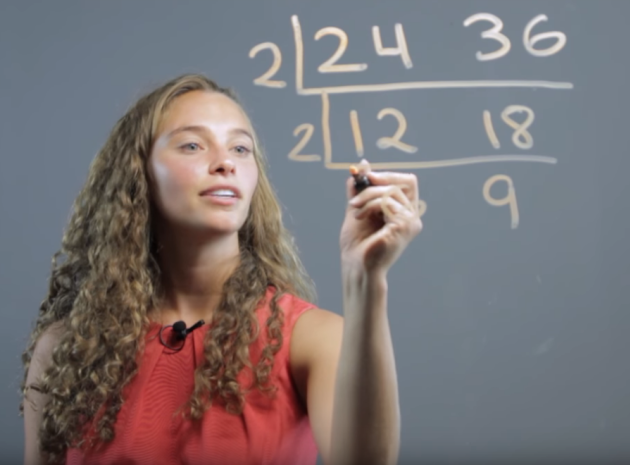1 | Greatest common factor explanation
This is a good place to start for the most simple explanation of what the highest common factor is (or greatest common factor as it’s called here). Although he does then go into how this is useful in factorising equations later on, which might be a bit much for what we need.
2 | Fast method of finding the HCF
From there, this video goes through a quick-and-easy method of finding the highest common factor, all narrated with a delightfully soothing Australian accent.
3 | Lowest Common Multiple methods
So soothing, in fact, that we’re going to stick with him here for this video as he talks us through the various methods of finding the LCM.
4 | Find the LCM in 3 seconds
For the champion of all LCM methods look no further than the attention-grabbingly titled ‘Find the LCM in 3 Seconds’. Excellent, that’s 59 minutes and 57 seconds of the lesson to do whatever you want. Hooray.
Well, OK, the video actually takes 8 minutes 39 seconds to watch, and should probably come with an asterisk as this method still requires you to have install recall of sums like 18 x 13 in order to find the LCM in 3 seconds (even if the video’s graphic claims 2 seconds). But, hey, until a ‘Find the LCM in 2 Seconds’ video comes out, it’s still a pretty great and speedy tactic.
Students will need to know other methods in order to show their working, but it’s a great trick to know and a handy mathematical tool to have.
5 | Find the HCF in 4 seconds
He’s also done a video for finding the highest common factor in 4 seconds. Four seconds? Who’s time does this guy think he’s wasting? Come back when you’ve shaved that off to a more manageable 3 seconds. I’ve got things to do.
6 | The ladder method for LCM and HCF
On to more specific methods here, with the added fun of skilled backwards writing on perspex for the viewer’s benefit. This one, as the title suggests, shows us the ladder method.
7 | Factor trees for LCM
And this one is a nice, short and simple intro to factor trees. It’s only three minutes long so it covers the basics in an easy-to-digest manner. It’s a handy one to show to pupils.
8 | LCM with large numbers
This video whizzes through finding the lowest common multiple of 81, 231 and 3,465, so it might only be suitable for more-advanced students, or at least require some pausing and rewatching.
But it’s a great example of all the other different tips and tricks you can use in maths to work this out. She uses prime factorisation (factor trees) where possible, and long division where not, to show that this seemingly complicated question can be deconstructed and solved like anything else.
9 | Prime factorisation using Venn Diagrams
Here’s a neat little graphic representation for using Venn diagrams if any of your students find this method more useful.
10 | LCM and HCF of three numbers
And if any of them get thrown off by the prospect of finding the LCM or HCF for three or more numbers, this video shows that it’s the same technique, only slightly longer, so there’s no need to panic.
Click here for more great HCF and LCM resources.











Tips, tricks, explanations and examples that can help you teach LCM and HCF to all pupils